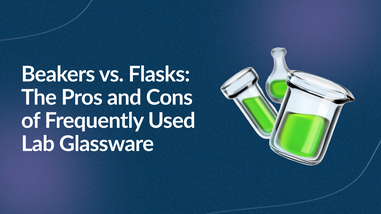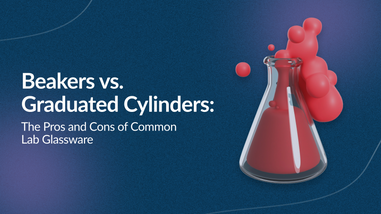- No products in the cart.
A lab convection oven is an essential piece of equipment in many scientific and research settings. It plays a vital role in various applications, including sterilization, drying, and heat treatment. To ensure the oven's longevity and optimal performance, regular maintenance is crucial. In this blog, we will provide you with ten valuable tips for maintaining your lab convection oven, enabling you to maximize its efficiency and reliability.
1. Read the Manufacturer's Manual
Before operating your lab convection oven, thoroughly read the manufacturer's manual. Familiarize yourself with the oven's specifications, operating instructions, and maintenance recommendations. Each oven model may have specific requirements, and following the manufacturer's guidelines will help you avoid unnecessary complications and ensure proper care.
2. Clean the Oven Regularly
Cleaning your lab convection oven regularly is essential to prevent the buildup of contaminants, residues, and other substances that can affect its performance. Wipe the interior surfaces with a soft cloth and mild detergent or an appropriate cleaning solution. Pay close attention to removing any spills, residues, or particles that may accumulate on the oven walls, racks, and vents.
3. Monitor and Replace Gaskets
The oven's door gasket ensures an airtight seal, maintaining the temperature and efficiency of the oven. Inspect the gasket periodically for any signs of wear, cracks, or damage. If you notice any issues, promptly replace the gasket to prevent heat loss, uneven temperature distribution, or potential safety hazards.
4. Calibrate Temperature Settings
Over time, temperature settings on your lab convection oven may deviate from the actual temperature inside. To ensure accurate and consistent results, it is crucial to calibrate the oven periodically. Use a reliable and traceable thermometer to measure the actual temperature and adjust the oven's settings accordingly.
5. Schedule Professional Maintenance
While regular cleaning and minor maintenance can be performed in-house, it is also advisable to schedule professional maintenance for your lab convection oven. Professional technicians can conduct thorough inspections, identify potential problems, and perform more complex repairs or replacements as needed. This proactive approach can prevent major breakdowns and extend the oven's lifespan.
6. Properly Place and Load Samples
The arrangement of samples inside the oven can impact its efficiency and uniformity of temperature distribution. Ensure that there is adequate space between samples to allow for proper airflow. Avoid overcrowding, as it can hinder heat circulation and lead to uneven results. Additionally, place samples on appropriate racks or trays, following the manufacturer's instructions, to maintain consistent air circulation.
7. Protect the Oven from Corrosive Substances
Certain chemicals or substances used in lab experiments can be corrosive and damage the oven's interior. Be cautious while handling and loading samples, ensuring that they do not contain any corrosive elements. If corrosive substances accidentally spill inside the oven, promptly clean and neutralize the area to prevent further damage.
8. Avoid Abrasive Cleaning Methods
When cleaning your lab convection oven, avoid using abrasive materials or harsh cleaning agents that can scratch or damage the surfaces. Opt for soft cloths, mild detergents, and non-abrasive cleaning solutions. Regular gentle cleaning will help maintain the oven's appearance and functionality without causing any harm.
9. Monitor and Maintain Ventilation
Proper ventilation is vital for the efficient operation of a lab convection oven. Ensure that the oven's vents are free from obstructions such as dust, debris, or other particles. Regularly inspect and clean the vents to prevent airflow restrictions, which can impact heat distribution and compromise the oven's performance.
10. Train Users on Proper Operation
Lastly, it is crucial to train all users on the proper operation and maintenance of the lab convection oven. Provide clear instructions on how to operate the oven, load samples correctly, and clean it regularly. Emphasize the importance of following safety protocols and adhering to the manufacturer's guidelines. By educating users about proper usage and maintenance, you can minimize the risk of accidents, ensure consistent results, and prolong the oven's lifespan.
Conclusion:
Maintaining your lab convection oven is essential for its optimal performance and longevity. By following these ten tips, you can keep your oven in excellent condition and achieve accurate and reliable results in your scientific experiments. Remember to read the manufacturer's manual, clean the oven regularly, monitor and replace gaskets, calibrate temperature settings, schedule professional maintenance, properly place and load samples, protect the oven from corrosive substances, avoid abrasive cleaning methods, monitor and maintain ventilation, and train users on proper operation. By implementing these practices, you can ensure that your lab convection oven remains a valuable asset in your research endeavors for years to come.
About Lab Pro
For over 40 years, Lab Pro Inc. has been committed to delivering the highest quality lab equipment such as laboratory convection ovens, hand tools, chemicals, lab supplies, and cleanroom PPE apparel to medical device companies and laboratories worldwide. To learn more, visit the biggest Lab Supply demo room in California, or contact us online or at 888-452-2776.












































